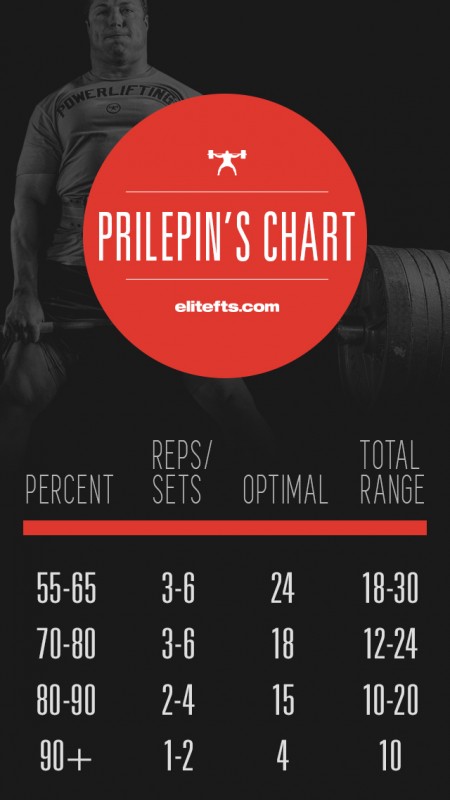
I have tried several programs and several coaches. What I'm about to present to you is nothing new. After all, most training programs and philosophies are similar: Coaches take a little bit from this guy and a little bit from that guy and a splash from that girl and then come up with something that works for them. Then, they use their voice to describe what they’ve been doing to get bigger and stronger. I pulled different concepts from various resources to develop my training philosophy, and this is what I came up with. It’s not groundbreaking or revolutionary; it’s just a different way to approach training.
RECENT: 15 Habits You'll Need as a Full-Time Strength and Conditioning Intern
Getting bigger and stronger is a pretty simple concept for the most part.
Lift big weights, eat a lot of food, and recover. A lot of people out there seem to overcomplicate this process.
RANT START
I have an issue with coaches who don’t train in some capacity. I’m tired of seeing fat, out-of-shape strength coaches. I get it—your back’s messed up, or your knees are jacked up or you got this shoulder thing. I get it. I’ve been there. I’m still there. But adapt: Figure out a way to get into the weight room and train. Treat yourself as you would an athlete. If your knees hurt when you squat, figure something else out. There’s no reason or excuse for a strength coach to be fat, out of shape, and weak. It’s a walking contradiction.
It’s like saying you're a chef but you don’t cook.
Most of these coaches also say they don’t have time. Maybe. What’s the saying? It’s not that you don’t have time; it’s just not a priority for you.
I can relate to the time thing, though. It’s something I’ve run into over the years. We as coaches are busy—from doing class checks to programming, to cleaning the weight room, to having a family and taking care of the wife and kids. The last thing a lot of us want to do is spend more time at work. Now, you younger guys may enjoy it, but as you get older, being at your place of employment another hour on top of a 10- to 12-hour day just doesn’t sound appetizing.
Again, I feel that all strength coaches should still train to some degree. It doesn’t mean you have to be a world-class powerlifter or an Olympic lifter, but you should do some type of movement everyday. This doesn’t always have to be weightlifting-type movements, either. You can pull a sled or even do mobility work.
This is non-negotiable in my life and it should be in yours too.
RANT OVER
I came up with this method in 2013 while working at The Spot Athletics. We were a brand-new business requiring me to wear multiple hats. When I say “multiple,” I mean 30 hats. We would be in the gym from 5 AM to 9 PM 5-6 days a week. It was hard to get a legit training session in while still getting everything else done. I sat down and wondered how I could develop a program that is simple in nature and easy to execute yet accomplishes the goals I had set out for myself. With regard to lifting, easy, progressive overload, and compound movements are important.
I had to find a way to become bigger, faster, and stronger with a limited amount of time. The way I found this out was the “3 and out” method. I had to pick three exercises that give me the biggest bang for my buck. Using this system, I became the biggest and strongest I had ever been. This method actually helped me to place third at APF Nationals, to qualify for WPC worlds, and to compete with some of the best powerlifters in the world.
First, a little backstory. I’m from Cleveland, Ohio. We have amazing football up here—well, high school football—but you grow up watching the Browns. It can’t be explained; it has to be experienced. It’s ingrained in us. It’s in our DNA. Save your jokes for later—I’ve heard them all. As you and I both know, the Browns’ offense normally isn’t very good.
We are notorious for going “3 and out.”
And voila! The name for the program.
3 and Out Method Setup
First, I split my training into one of two ways based on where I was in my yearly plan:
Setup 1
- Squat/Lower
- Bench/Upper
- Deadlift/Lower
- Overhead Press or Incline Bench/Upper
or
Setup 2
- Max Effort Lower
- Max Effort Upper
- Dynamic Effort Lower
- Repetition Effort Upper
For the rest of this article, we will focus on using Setup 1. For Setup 1, I use the Prileprin's Chart.
This chart states how we can use various intensities (percentage of your 1RM) to stimulate certain physiological adaptations. This chart is an excellent resource when setting up set and rep schemes for your training program. Use this chart as a guide that can change over time. Try the minimal amount, optimal, maximal, and volumes above those listed on the chart. Track these things to see which ones work best for you. It’s a template/guide, not gospel.
Let’s say we are going to follow the optimal range to keep things simple. Looking at the chart, you can see that using the 80-90% range of your 1RM is what you would use to train for strength. If we are training for strength, we need an optimal number of reps, with 15 (range 10-20) being suggested within that range. If I'm going to put it into a set and rep scheme for training, it would be 5x3 at 80-90% intensity. This would achieve 15 reps in the optimal set/rep/intensity range needed for strength.
My training for the main movements over the course of five weeks would be set up as follows:
- Week 1: 6x4 at 60-70%
- Week 2: 6x3 at 70-80%
- Week 3: 5x3 at 80-90%
- Week 4: 4x1 at 90+%
- Week 5: Deload week: 3x3 at 50-60%
For the training max, I suggest that novice/beginner lifters take 90% of their 1 rep maxes and that intermediate/advanced lifters take 93%. Prior to week one, you would take a 3RM for each lift. If you already know your 3RM or 1RM, you can skip this part.
We would calculate our 1RM using the following formula:
(Weight lifted x reps performed) x .033 + (weight lifted) = Projected 1RM
Then, take 93%.
Example for Squat
- (300lbs x 3 reps) x .033 (+ 300lbs) = 330lbs
- 93% of 330 = 297 or 300lbs
300 pounds would be our working weight for the next 5 weeks.
You may be asking, “Why didn't I just take my 1RM instead of using 93%?” Because our 1RM can vary on a day-to-day basis. You won't always be able to squat 330 pounds. Some days, it will feel heavy, and other days, it will feel light. Starting lighter will also allow you to make consistent gains from month to month. In this way, you won't hit a plateau, stall, and get frustrated. Becoming strong takes time and patience. There is no rush. The sooner you can learn this and accept this, the better the results you will have.
Now, let’s set up a program for a hypothetical lifter. We will call this lifter Feech.
Feech’s max lifts are as follows:
- Squat: 400
- Bench: 275
- Deadlift: 495
- Overhead Press: 165
Next, we need to find training maxes for Feech:
- Squat: 400 x .90 = 360
- Bench: 275 x .90 = 250
- Deadlift: 495 x .90 = 445
- Overhead Press: 165 x .90 = 150
Feech would begin the “3 and out” method using the following numbers, 360/250/445/150, with the following setup:
- Week 1: 6x4 at 60-70%
- Week 2: 6x3 at 70-80%
- Week 3: 6x2 at 80-90%
- Week 4: 4x1 at 90+%
- Week 5: Deload week: 3x3 at 50%
At the end of each five-week cycle for progressing your weights, I suggest adding 5 pounds to your upper-body lifts and 10 pounds to your lower-body lifts. But if week 4 felt extremely heavy, just keep your weights the same, or increase your upper weights by only 2.5 pounds and your lower weights by 5 pounds. Listen to your body.
My favorite part of the program is how you set up the week. As you can see, in week one, we have a range of 60-70%. This is how I would tell Feech to approach his squat over six sets after warming up:
Week 1 — Squat
- Set 1: 60% - 215 x 4
- Set 2: 62% - 225 x 4
- Set 3: 64% - 230 x 4
- Set 4: 66% - 240 x 4
- Set 5: 68% - 245 x 4
- Set 6: 70% - 250 x 4
Feech should have no problem hitting these weights because it's 90% of his 1RM. But some days, the weights may simply feel heavy, or he’s tired or stressed but wants to get a workout in. It’s the reason we gave ourselves an intensity range (60-70%). Let's say Feech got to set 3 at a weight of 230 and it just felt heavier than usual. We could keep Feech at 230 for sets 4-6 if going to 240 seemed like it would break him. In this way, he is still in the required set/rep/intensity range.
Now, on the last set for weeks 1-3, we would do as many reps as possible (AMRAP) but leave one or two in the tank. You get to do this only if you make it through every set with the prescribed weight. Don’t take it to failure, but near failure will do the trick. On week 4, you take your last set to fail.
Week 5 is a little lighter week to give your body a rest. This doesn't mean you take off from the gym though.
After finishing the main movement, you have to pick two more exercises. Where you are with your yearly plan will dictate the set and rep scheme. If you need to put on size, I would do 4-5x10+. If you need to increase strength, I would do 4-5x5-8. Normally, if the squat is my main movement, my second movement would be a hinge movement, or sometimes a deadlift.
Examples
- Romanian Deadlift
- Split stance RDL
- Conventional Deadlift
- Sumo Deadlift
- Deficit Deadlift
- Good Mornings
My third exercise on a squat day has always been a single-leg exercise. You can use anything from an SSB to KBs to DBs.
Examples
- Lunges
- Reverse Lunges
- Split Squats
- Bulgarian Split Squats
- Lateral Lunge
- Cossack Squats
I realize that this isn’t a lot of volume, but remember that this is geared toward those who have limited amounts of time to train but still want to get training sessions in. This is a great way to set up your program. Next month, we will look at setting up the “3 and out” method for those of you with a little more time, and those needing a little bit more volume. If you have any questions or need help setting up a program, please don’t hesitate to contact me at nbronkall@gmail.com. I look forward to speaking with you.
But, really this year is our year. Go Browns!











